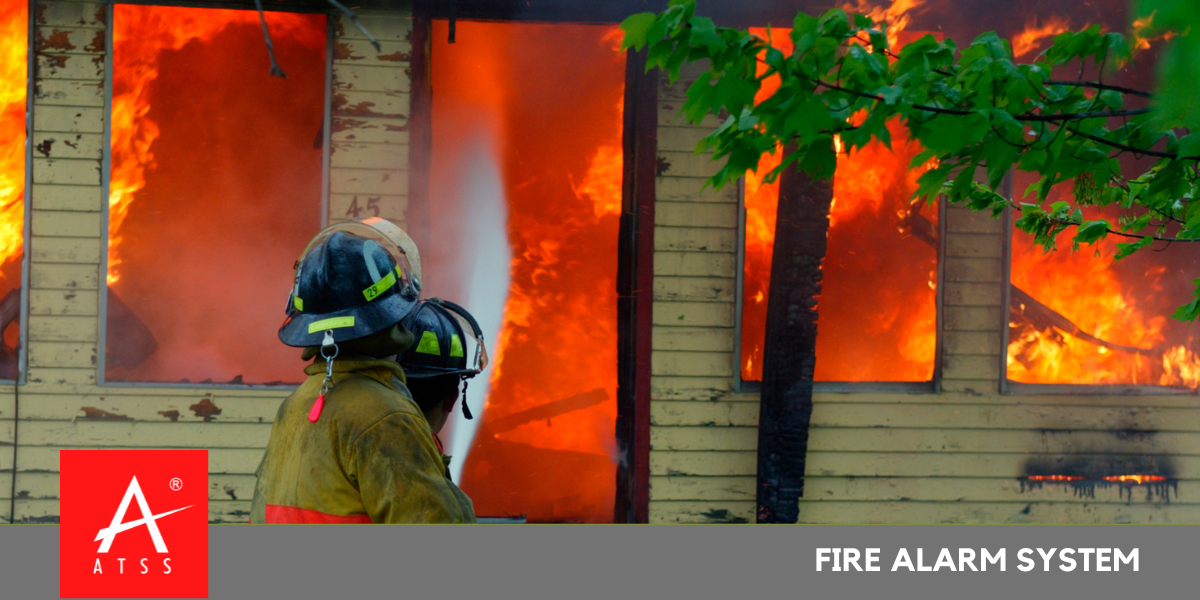
Fire Alarm System
A fire alarm system has a number of devices working together to detect and warn people through visual and audio appliances when smoke, fire, carbon monoxide or other emergencies are present.
A Fire Alarm System is an active fire protection system that detects fire or the effects of fire, and as a result provides one or more of the following: notifies the occupants, notifies persons in the surrounding area, summons the fire service, and controls all the fire alarm components in a building. Fire alarm systems can include alarm initiating devices, alarm notification appliances, control units, fire safety control devices, annunciators, power supplies, and wiring.
Fundamental Design
A fire alarm system is composed of components which can be classified into the following categories.
Initiating Devices – these devices either sense the effects of a fire, or are manually activated by personnel, resulting in a signal to the fire alarm panel. Examples are heat detectors, smoke detectors, manual pull stations or call points, and sprinkler pressure or flow switches.
Main Fire Alarm Control (panel) – this is the central brain of the overall system, which coordinates the signals and resultant actions of the system.
Fire Alarm Control Unit (Panel) – any panel providing required functions, and has inputs and outputs. NAC Power booster panels are the most common example.
Power Supply – because one of the fire alarm system objectives is life safety, fire alarm system power supplies are redundant, and reliable when compared to electronic or electrical systems of similar complexities (e.g., HVAC control systems). Primary supply- Commercial light and power. Back-up/secondary supply – Usually sealed, lead-acid batteries. NAC power supplies for additional notification appliances beyond the original capability of the FACP. Generators are permitted under strict rules.
Notification appliances – these devices provide stimuli for initiating emergency action and provide information to users, emergency response personnel, and occupants. Examples are bell, siren, horn, speaker, light, or text display that provides audible, tactile, or visible outputs.
Signaling Line Circuits (SLC)– the wiring which carries data information.
Supervisory Signals – detecting devices and signaling to indicate a condition in fire protection systems which is not normal and could prevent the fire protection system from functioning as intended in the event of a fire. An example is a closed valve which controls the water supply to a fire sprinkler system. This does not indicate the failure of a component or subsystem of the fire alarm system.
Trouble Signal – signaling to indicate a wiring fault. Sometimes specific components or features of the fire alarm system, of which could prevent the fire alarm or fire suppression system from functioning as intended. An example is a disconnected wire at a heat detector.
Remote Annunciation – A usually alpha-numeric display (may be graphic) that indicates where in the building the alarm originated. It may also indicate the type of device. Used by emergency personnel for locating the fire quickly. Sometimes these will contain some control functions such as alarm silence and alarm reset. Must be key or keypad controlled.
DEVICES
Fire alarm systems have devices connected to them to detect the fire/smoke or to alert the occupants of an emergency. Below is a list of common devices found on a fire alarm.
Manual Pull Stations/Manual Call Points – Devices to allow people to manually activate the fire alarm. Usually located near exits. Also called “manual pull boxes”. Other countries have different devices as standard, for example the UK uses ‘break-glasses’, when people break a small pane of glass to activate the alarm.
Smoke Detectors – Spot type: Photoelectric and Ionization; Line type: Projected Beam Smoke Detector; Air-Sampling type: Cloud Chamber
Water Flow Switches – Detect when water is flowing through the fire sprinkler system
Rate-of-Rise and Thermostat (heat) Detectors – The rate-of-rise detector measures the change in the temperature of the space through the use of a differential pressure switch. This switch contains an air chamber separated from the air in the ambient space by a flexible diaphragm.

